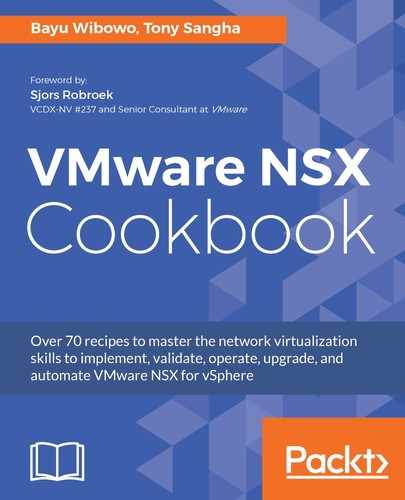In this recipe, we configured the already-deployed ESG from the previous recipe for BGP routing and peering with the already-deployed DLR. BGP Peering was using a private autonomous system number and is considered internal BGP (iBGP) peering as both the DLR and ESG are using the same AS number. The ESG was already configured for a default gateway, which is where all the network traffic will pass through if a more specific route has not been learned or specified on the ESG. The reason a default gateway is preferred in this model is that the logical networks behind the ESG and DLR are non-transient and, for all intents and purposes, are considered stub networks. However, using a default gateway on the ESG implies the upstream physical switch installs the correct static routes for the logical networks that back the ESG and the next stop IP address being that of the ESG uplink interface. Without these static routes in place, traffic will not be able to ingress the ESG from the physical network.
Although dynamic routing protocols are better overall, static routes are often used in environments where there is not much change in network topologies or if specific network segments have been pre-allocated for use in NSX. If static routes are not suitable, it's better to use a routing protocol like external BGP (eBGP) to the physical network.
